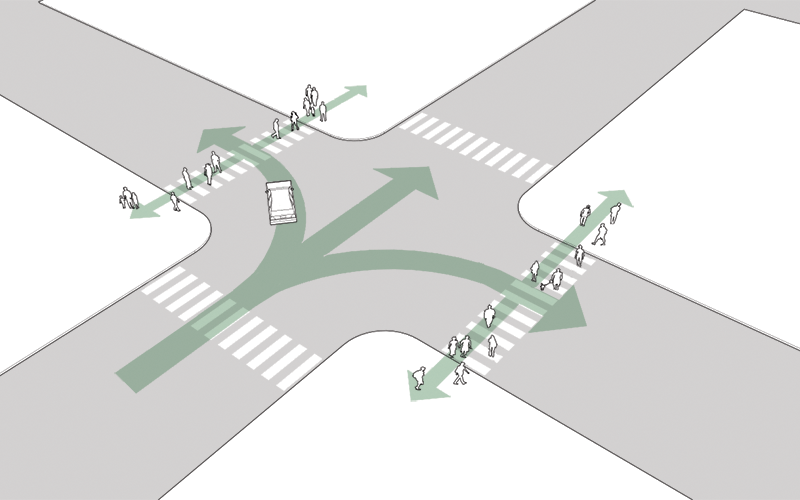It’s no secret that the majority of crashes that result in people walking and biking being killed involve turning vehicles. The question is what can be done about it.
Recent Chicago crash analysis found 52 percent of pedestrian crashes at signalized intersections involved turning vehicles; 36 percent were left turns and 16 percent were right turns.
People biking are more likely to be involved in “right hook” crashes where a person driving passes to the left of a person biking and then makes a right turn. Fifty-five percent of bicycle crashes occur at intersections.
Sign our Vision Zero Call to Action to show your support for limiting turns.
Twenty-three year-old Anastasia Kondrasheva was killed by the driver of a flatbed truck in a right-hook crash in Roscoe Village in September.
Chicago’s regional planning agency has found reducing turning conflicts is one of the most cost-effective ways to improve traffic safety. Relatively minor changes like adjusting signal timing or restricting turns in high-crash corridors can be done quickly at low cost.
These strategies have proven effective at improving safety not just in Chicago but in cities across the U.S. Here are some changes Chicago should consider:
- Restricting turns in high-crash zones: Right hook crashes are some of the deadliest road conflicts in the city – especially for people biking – and many crashes with people walking involve left-turning vehicles. Chicago should identify corridors with the most right- and left-turning conflicts and limit or eliminate turns in those corridors. On Jackson Avenue in New York City, limiting turns – in addition to upgrading intersection infrastructure – eliminated 63 percent of all injury crashes at one intersection. In San Francisco, the Safer Market Street project led to fewer turning vehicles on one of the busiest corridors in the city.
- Upgrading intersection infrastructure: Chicago has already debuted one of the first protected intersections in the U.S. and set ambitious goals for installing pedestrian countdown signals and leading pedestrian intervals at busy intersections. Chicago should further upgrade infrastructure at high-crash intersection, with a focus on protecting the most vulnerable users who are biking and walking. The City of Los Angeles installed a pedestrian scramble at the intersection of Hollywood and Highland, increasing safety for people walking by stopping vehicle traffic in all four directions during the crossing period. The city immediately began to see fewer crashes and injuries there.
Limiting and protecting turns are low-cost ways to make progress on Vision Zero. Sign our Call to Action to show you’re on board.
Learn more about Vision Zero – including our policy recommendations on commercial vehicles, hit and run crashes, and speed reduction – on our Vision Zero campaign page.
Graphic Credit: National Association of City Transportation Officials

